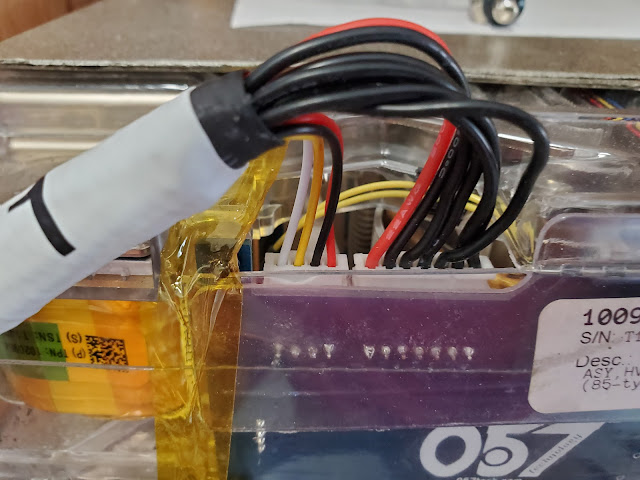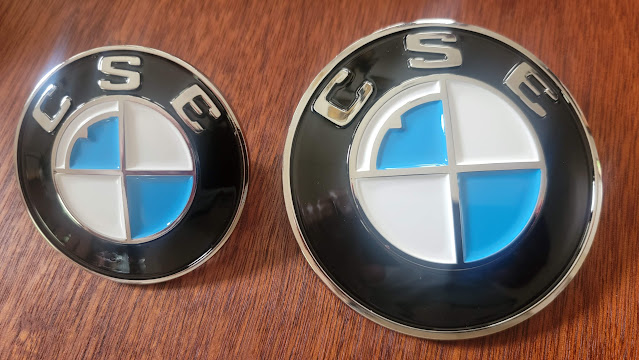Danger High Voltage!
Hooking up the first 10 Tesla battery modules for traction (High Voltage), monitoring, charging, and cooling is a big job. As mentioned in the "We're Monitoring You" post, each set of cells needs to be monitored by the BMS to balance the cells and prevent overcharging. They also need to be watched for temperature when driving via the built-in thermistors and cooled via the built-in cooling passages.
I started with the high-voltage side of things because that dictates where everything sits in the battery box. There are a number of ways to connect the batteries but I came up with one that terminates both the negative and positive terminals in the "BMS Void" area of the box and can be connected with solid copper busbars in every junction except one.

|
| High voltage layout, terminating in void |
I had purchased some really nice busbars from Electric Classic Cars, UK and used them where possible but the odd layout of my batteries made in necessary to fabricate some custom connections also. I purchased 3 feet of 1 1/2" copper bar from McMaster-Carr and made three custom busbars. The Orion manual states "do not use homemade busbars" and goes on to say "bare, unplated copper busbars have been known to corrode or oxidize quickly, which can lead to high resistance connections between cells resulting in reduced reliability." All my busbars have bends to allow some flexibility and prevent transmission of vibrations to the cell terminals and I will eventually have them chrome plated and vinyl coated in the non-conductive areas to make them "professional" but for now, they do the job.

|
| Testing my first busbar -- 3 modules in series, all partially charged, gives 63 volts, or 21 volts each |

|
| The only cable runs from the top battery (#7) to #8. 0/2 AWG wire needs to find its own bends |
Assembling my battery box is like a Japanese puzzle -- each battery must be inserted in the correct order, with it's connections made, before the next battery is slid in above.
Next up was to solder connectors to the BMS harnesses at the proper lengths for the each cell tap. The cell taps allow the BMS to monitor the voltage of each group of cells. To balance the cells, the BMS can shunt off power from cells with higher voltages while charging the cells with lower voltages. The thermistors allow the BMS to monitor the temperature of the coolant entering a leaving each battery module.
Create a harness sounds simple but each battery requires 11 wires -- 1 cell tap negative, 6 cell tap positives, and a positive and negative for each of the two thermistors. Each run combines wires from the one of two BMS harnesses and wires from the thermistor expansion module harness. And both the BMS and thermistor expansion module are stingy with ground wires so some have to be split and shared.
It took almost a week of evenings to get it all correct. I soldered connections, labeled with printed heat shrink, wrapped in woven split loom, and taped with Tesa tape.

|
| The harness plugs into the 057 Tech cell tap boards on each Tesla battery |

|
| Short on the #1 positive cell tap wire |

|
| Burned right through the PCB ribbon |

|
| Still a lot more wiring to do |
Unfortunately, that's just the start of the wiring projects. There is the main power, CANBus, charger ready, etc harness for the BMS, the current sensor BMS harness, cell taps and thermistor wiring for the rear 4 batteries, power and CAN for the thermistor expansion module, etc. And that's just up front. In back there's the J1772 plug, the onboard charger, the DC/DC converter, the precharge controller, contactors, etc.






